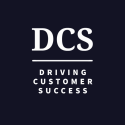Turn your product into your top marketing tool
In-product messaging should be a marketer’s go-to strategy for reaching and retaining customers. Here’s why and, most importantly, how you can achieve that.
We’re all constantly communicating. Throughout our workdays and personal lives, we’re inundated with news, push notifications, and endless scrolls of information. This is happening across various channels, too—email, text, social media, and on and on. So, when it comes to communicating with customers, companies need to not only be purposeful in their messaging but also deliberate in where and when customers consume it.
In-product messaging is one of the most important communication strategies B2B companies can apply for an intentional, more efficient, and, really, a less bothersome experience for busy (and often distracted) customers. It also benefits business growth too. Approach in-product messaging through the principles of reach, relevancy, and retention.
Reach customers where they already are to capture their attention
You’ve made it through the acquisition phase—daunting and definitely expensive. Once you’re on the other side, the biggest difference is that your customers now actually want to hear from you. Once businesses onboard a new customer, there’s an added resource of talking to them through the product, which is when the customer will likely be paying more attention to it (versus, say, another email in an exhausted inbox). Your first job is to get them to download your app. The fast follow is to get them using your app and interacting with your brand to reinforce the value you created during the buying process.
In-product messaging is about meeting customers where they already are so that your message is contextualized in a way that positively impacts their day-to-day: help, useful tips, insights, educational content, etc. It can be assumed that your customers are actively using your product—that’s why they are a customer. So, as they’re actively engaging with it, they will be more likely to read and act on communications.
For B2B companies, this means focusing on how that in-product marketing can bolster CX, considering 80% of customers say the experience a company provides is as valuable as the company’s products, it’s a good investment. Is your goal to upsell or cross-sell? To have them adopt a new feature you just released? Or upgrade the product altogether? This type of marketing should be happening in the product because it’s where you already have the customer’s attention and where they can understand the relevance of what it is you’re trying to say.
Create relevant communications by leveraging customer data
No one likes to be sold past the close. Imagine investing in a new product only to receive an email a few days later marketing… that very same product. You would immediately question why their internal teams weren’t talking to each other. Or imagine receiving alerts about a service outage or bug for something you don’t even use. Needless to say, that would cause unnecessary concern. You might wonder: does this company even care about my individual customer needs? They have all my information, so why aren’t they using it to send me targeted content that is actionable?
If the messages you send aren’t relevant to your customers, they will opt out of your communications altogether and miss important things later. Worse still, they may assume that your lack of understanding of their needs is simply because you don’t care about their unique needs and the problems you are solving with your product.
Just as existing customers don’t want to receive sales communications for products they already have, they don’t want to receive communications about services they don’t use. So much marketing energy is spent in the acquisition phase, often only guided by certain types of information you have on potential or ideal customers. But for existing customers, marketers should be leveraging feature-level usage information they have at their fingertips.
Every interaction (or lack thereof) with your business’s product provides data. For example, if a customer has downloaded the app but hasn’t yet set it up, send a text to offer support. Maybe the customer hasn’t signed into the app in a long time. Send a push notification to remind the customer of the value they originally saw when signing up for it or news about an important update. Or perhaps the customer has been an avid and consistent user: engage them to beta test a new feature.
But also consider the likelihood of the message being seen. Why, when, and how individuals use your product is data that marketers can use to create clearer, more actionable communications tailored to each of your customers. Customers are giving you this information with every interaction and lack thereof. Focus on expertly delivering what the customer originally came to you for to build their trust, and then use that information to create relevant communications that customers want to receive.
Retain customers by providing content that builds community
When it comes to information sharing, in-product messaging can be a valuable platform for thought leadership and community building. Customers have chosen your product because you are experts and thought leaders in your industry. And your knowledge is even more applicable once they become your customer. Quite simply, existing customers are more interested in what you have to say than potential ones.
By continuing to share relevant and helpful perspectives via the product, you streamline the steps customers need to take in order to consume your content. Doing so also continues to demonstrate why your company is best suited to serve your customers’ needs. It shows that the business has a pulse on the industry, an interest in improving it, and ideas to do so.
This type of content can also be an opportunity to share information about concepts or ideas your business is working through that could benefit from real feedback. Customers are invested in your company’s success and are a rapt audience for testing new features, products, or services. By creating and sharing content and ideas via the product, you are actually increasing engagement between your customers and your business. A community is being built—one interested and invested in your product.
Marketers know that communicating with customers is one of the most critical components of the job. When you make your customers feel heard and understood, they are more likely to be promoters and refer business to you.
You’ve worked hard to build your product, so leverage it for your messaging with intention and purpose. Reach customers where they are, provide them with relevant information, and retain their business through simulated one-to-one communication that speaks to who they are, what their need is, and why you’re the best product to meet both their needs today and well into the future.
-Rebecca Grimes, CRO, Ruby

Hakan Ozturk
Founder, theCScafe.com, #1 Weekly Customer Success Newsletter
Hakan Ozturk is a Paris-based Customer Success leader with over 15 years of experience in the computer software industry. Passionate about driving growth and delivering value to strategic customers, Hakan has established himself as a trusted industry expert. As the Founder of The Customer Success Café Newsletter and TopCSjobs.com, Hakan provides valuable industry insights and daily-updated job opportunities worldwide in the field of Customer Success. Connect with Hakan to boost your career in CS and your company’s potential for massive growth.

Leave a Reply